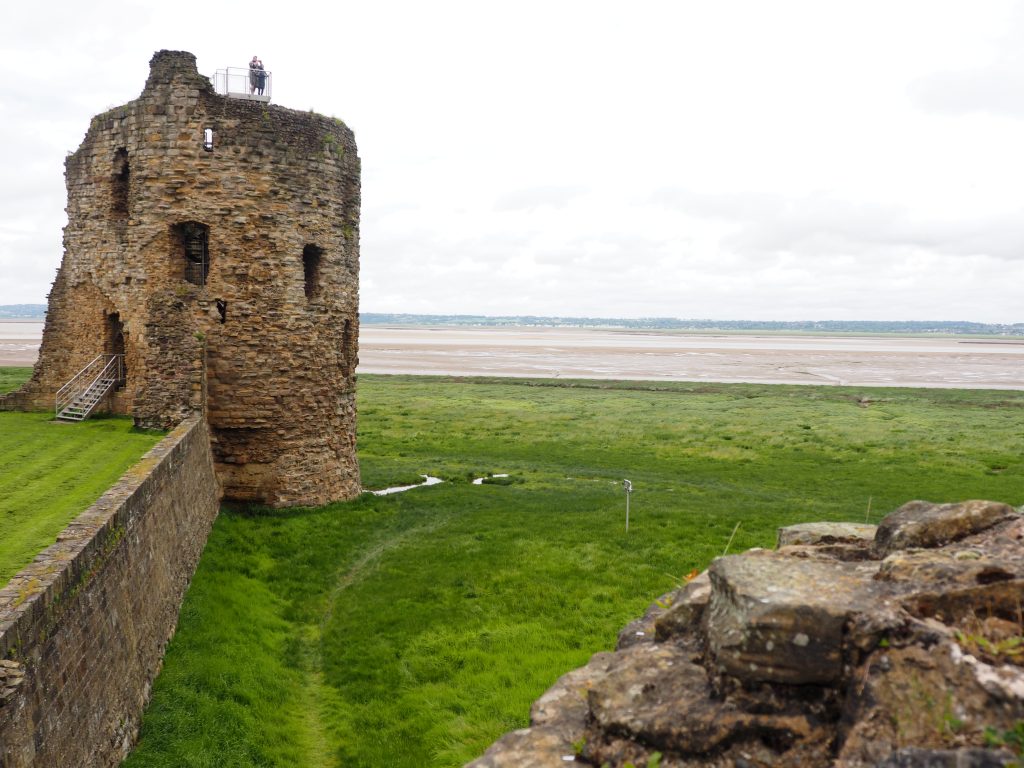Flint, the former county town of Flintshire, is built on the west shore of the estuary of the River Dee.
The town and castle were built at the same time by Edward I of England, who wished to control the route between Chester and the River Conwy as part of his strategy to defeat the Welsh princes. In 1277 Edward I brought workers from across England to build the town and castle, with a plan to garrison English soldiers in the castle and for English merchants and craftsmen to live in the town. The town’s charter as a borough was issued in 1284. Many of the workers stayed on, although there were some times of tension between the Welsh and English communities. The ceiling of the Mayor’s Chamber has 15 shields, which show the armorial bearings of the ancient royal tribes of Wales.
Flint castle, with its huge ‘Donjon’ defensive tower, and three smaller round towers, can be seen between the town and the River Dee. It is managed by CADW and open to the public free of charge. The medieval town had the castle at one end and the church at the other, with market place, workshops and houses between them. Its outlines can still be traced in today’s street pattern.

The history of the area goes back much further than the medieval town. Many Roman coins were found during construction work when the town hall in was rebuilt 1840, and there is evidence of Roman lead mining at Halkyn mountain to the south.
Westwards along the coast is Holywell, the site of St. Winefride’s Well. It has been a place of pilgrimage since at least 1115, and is said to be the oldest pilgrimage site in Great Britain. The 15th Century chapel is set into the hillside, and spring water bubbles up before flowing out into a pool, considered to have healing properties. It is on the route of the North Wales Pilgrim’s Way which runs from the site of nearby Basingwerk Abbey to Bardsey Island.


